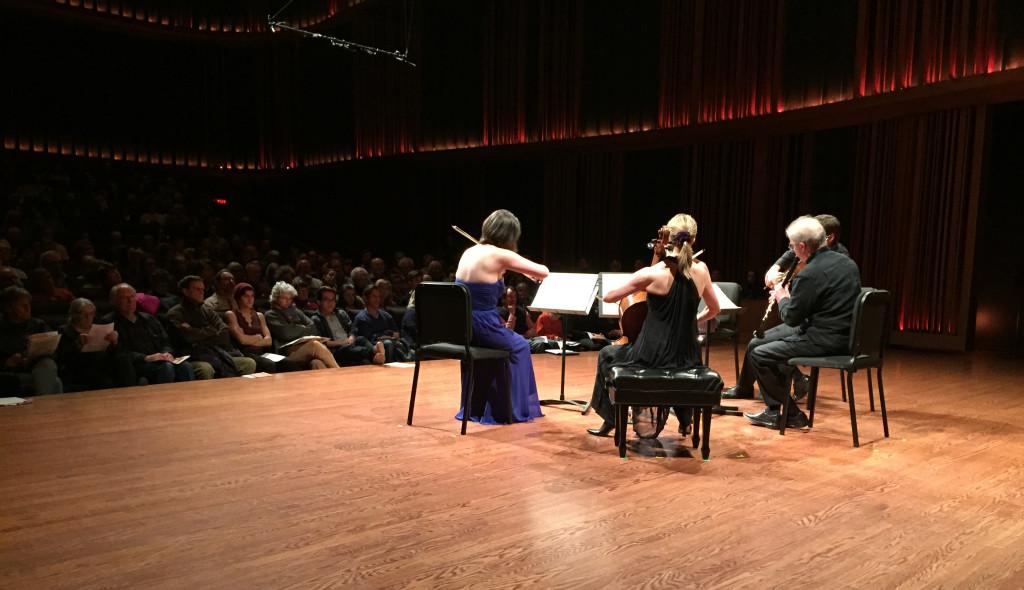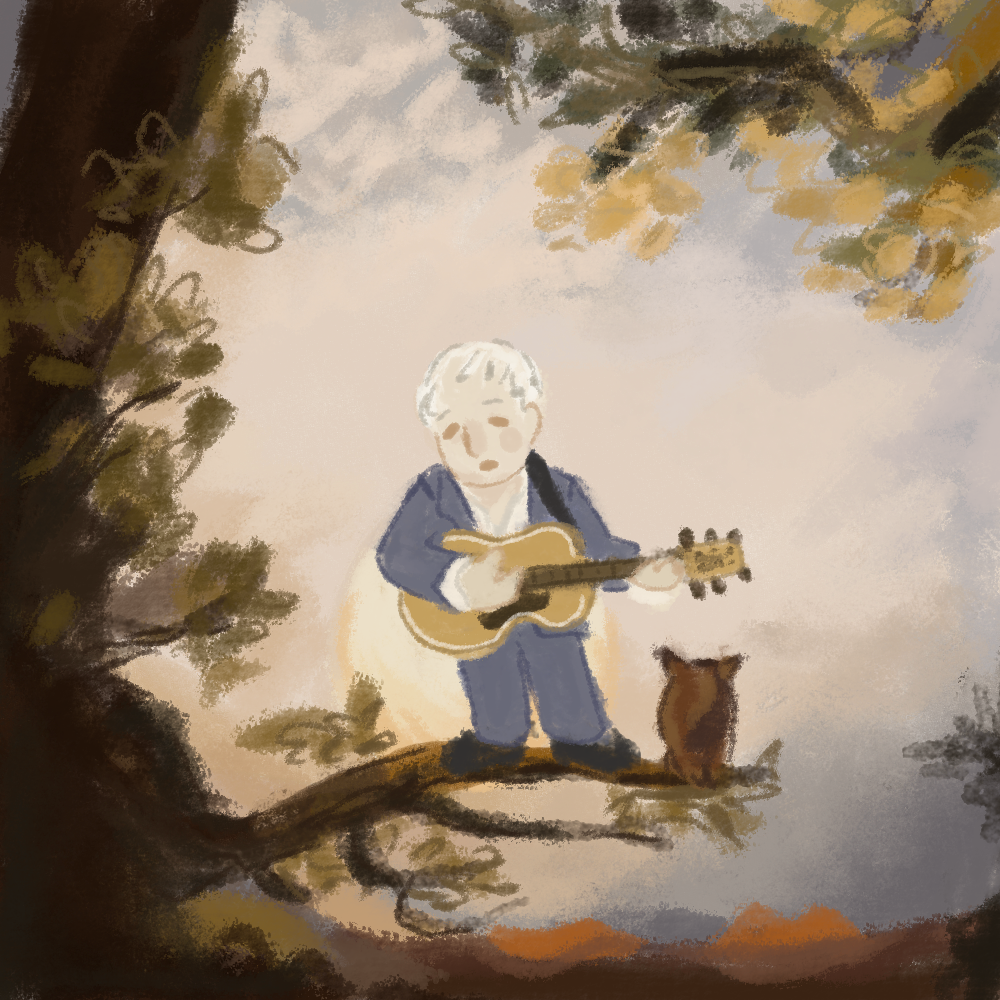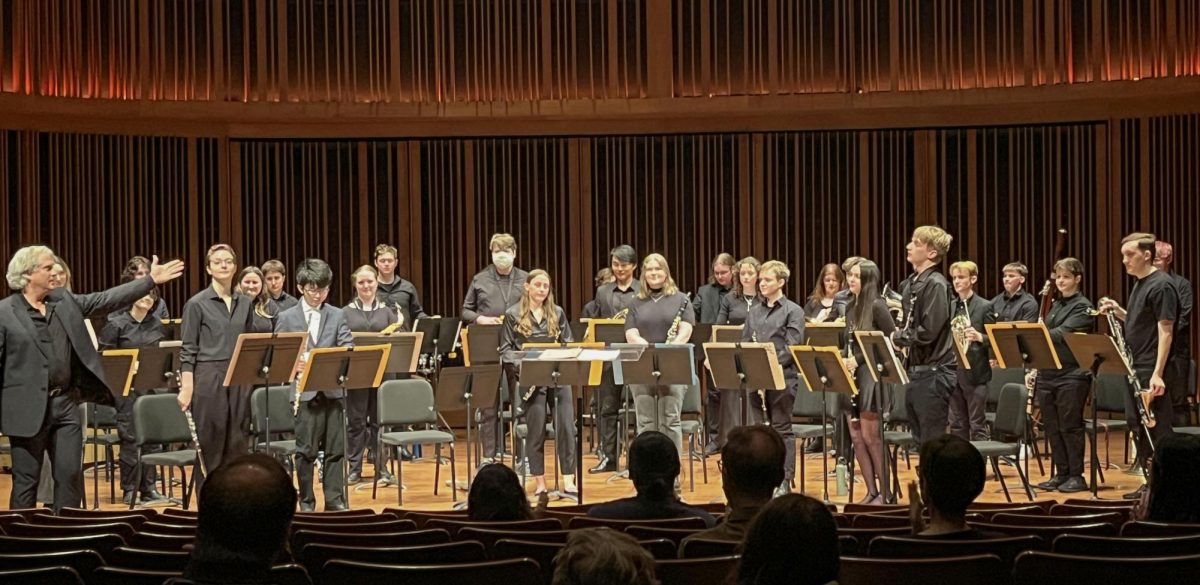
The famed Music Director of the Minnesota Orchestra, Osmo Vänskä, came to Macalester last Thursday for a chamber music performance. Vänskä, a clarinetist in addition to running the Minnesota Orchestra, performed with a string quartet in a night that was filled with dazzling, emotional performances.
A quick disclaimer before I begin this piece: I don’t have the brain of a classical music critic. That being said, I like classical music. A lot. I’ve played cello for almost ten years, and my dad was always playing classical music in our house while I grew up. I don’t feel like I need to be an expert in classical music to write about it, though. I wish it were more popular and more accessible, which is why I was so excited that there was a free chamber music concert at Macalester, featuring Osmo Vänskä of all people, last Thursday.
For those of you that don’t know why Osmo is such a big deal, a bit of background: we’re lucky enough to have one of the finest symphony orchestras in the country (some say in the world) in the Minnesota Orchestra. They’ve received countless awards, toured around the world, and helped create the phenomenal arts culture here in the Twin Cities. Orchestra Hall, their concert hall, is absolutely gorgeous. They have such deep levels of support among the public here it’s unheard of. Osmo Vänskä is their Music Director, and many say he’s the reason why the orchestra is as strong as it is.
But in 2012, the orchestra’s management locked out its musicians. After the economy went downhill and the Orchestra went into debt to renovate their concert hall, they were in serious financial trouble. They offered a new contract with the musician’s union which would seriously cut their salaries and benefits, and trim the size of the orchestra. The musicians held firm against these cuts and the orchestra went into lockout. They weren’t allowed to rehearse or perform in Orchestra Hall, and the orchestra cancelled an entire year’s worth of concerts.
This was devastating. One of the most prominent orchestras in the country was shut down. They cancelled their concerts at Carnegie Hall—a huge honor for any orchestra—and Osmo Vänskä threatened to resign if the lockout didn’t end. A year into the lockout, with no signs of resolution, Osmo did resign.
Thankfully, the lockout ended in January 2014. And Osmo came back.
Without him, there’s no Minnesota Orchestra and without the Minnesota Orchestra, the phenomenal arts culture in the Twin Cities isn’t nearly as strong.
He’s known around the world as being a strong leader for the Minnesota Orchestra, and took the Minnesota Orchestra to new heights. And when he left, the arts community in the Twin Cities collectively mourned.
Now that he’s back, and the Minnesota Orchestra is arguably as strong as ever (I saw them perform last year, and they were phenomenal), seeing Osmo perform at Macalester was the cherry on top.
“Music for Clarinet and String Quartet,” a piece composed by Macalester professor Randall Bauer, debuted on Thursday. The short piece featured an array of melodies that showed the virtue of putting the clarinet up against a string quartet. The piece started off slow and methodical, with all five instruments performing a melody in unison. However, the piece quickly escalated, with a rapid back and forth between the strings and clarinet. The clarinet seemed to be battling against the four stringed instruments, with a melody that seemed aggressive and rough. However, Bauer’s piece played off those instrument’s differences to the strongest effect, and when these two seemingly incongruous instruments went up against one another, it worked beautifully.
The second piece performed, Erwin Schulhoff’s “Duo for Violin and Cello,” consisted of four very different movements that brought a variety of moods to Mairs Concert Hall. The first movement, moderato, was a dizzying, colorful ballet which tested the upper limits of these instruments’ capabilities. After beginning simply, the duet performed a colorful arrangement which often stretched to the highest notes that the violin and cello could reach. The second movement, an allegro giocoso, started off boldly and confidently, and was a much more predictable, patterned movement than the first. In the third movement, andantino, the violin and cello switched off throughout, with one instrument taking a back seat while the other got a chance for its melody to soar. The cello began in the background, laying a gentle bed of pizzicato (gently plucked strings) for the violin to shine. The violin and cello balanced each other perfectly in this piece, which ended on a subdued, almost reverent note. The final movement, the moderato, ended powerfully, with the violin and cello practically battling one another to be the boldest instrument on stage. By the end, the violinist’s hairs were snapping off his bow, a true sign of passion and a violinist really feeling the music.
After a brief intermission, all five musicians gathered on stage once more for the final piece, Johannes Brahms’ “Quintet for Clarinet and Strings in B Minor.” Brahms’ piece, according to the program notes, plays on themes of lament and departure. The quintet is one of the last pieces Brahms created, and is described in the program as “a work of heartbreaking melancholy — probing, dignified, and bittersweet.” Brahms’ piece begins with a beautiful, flowing allegro, which passes the melody back and forth between the clarinet and strings in an effortless spirit of cooperation. His second movement, the adagio, was much more subdued and filled with sorrow, ending with a soft, mournful clarinet that wept to the entire hall. The andantino brought a resoundingly different note to the room, with a much more layered, playful arrangement that highlighted the expressiveness of these instruments. The final movement, con moto, brought balance to the composition with a theme and variation that effortlessly bounced between all five instruments. Throughout all these different movements, no matter how different they were in arrangement, the clarinet was the glue that held them all together.
The entire concert was remarkable. All five performers showed a strong passion and enthusiasm, which filled the room and got me, an uninformed yet aspiring classical music listener, captivated all evening. The selection of pieces perfectly showed how powerful these instruments can be, and how they can play with melodies and patterns to dazzling new heights. The pairing of a string quartet—two violins, a viola, and a cello—with a clarinet was unexpected, and on paper I wouldn’t think that it would work out well. But hearing them perform together on Thursday showed what happens when you take two completely different types of instruments and put them in the hands of five talented musicians. At times, they battle, at other times, they cooperate, but throughout it all, they work together perfectly.








Oliver May • Sep 10, 2019 at 10:29 pm
One more issue is that video games are generally serious in nature with the main focus on finding out rather than fun. Although, there is an entertainment part to keep your kids engaged, each game is often designed to develop a specific skill set or curriculum, such as math concepts or science. Thanks for your publication.
Evan Lawrence • Sep 9, 2019 at 12:32 pm
This is the right website for everyone who really wants to understand this topic. You understand so much its almost tough to argue with you (not that I actually would want to…HaHa). You definitely put a fresh spin on a subject that has been written about for many years. Wonderful stuff, just wonderful!